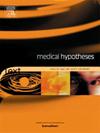Decoding IL-6/STAT3 as a tumor evolutionary Network: Rethinking breast cancer adaptability and treatment
IF 2.1
4区 医学
Q3 MEDICINE, RESEARCH & EXPERIMENTAL
引用次数: 0
Abstract
The IL-6/STAT3 signaling pathway has long been recognized as a critical driver of breast cancer progression, therapy resistance, and immune evasion. However, conventional approaches targeting this path that yielded limited success suggesting an incomplete understanding of oncogenic potential. We propose a groundbreaking hypothesis that IL-6/STAT3 functions as a dynamic evolutionary force in breast cancer, enabling tumor cells to engage in rapid adaptive plasticity, akin to an evolutionary intelligence system. We propose that STAT3 is an epigenetic architect that reconfigures chromatin landscapes and affects non-coding RNA networks to help tumors survive stress. STAT3 has traditionally been a transcription factor, but new data reveals it directly remodels chromatin. In breast cancer cells, STAT3 alters chromatin accessibility via interacting with histone-modifying enzymes such HATs and HDACs. This variation is important because it highlights the unknown function of STAT3 as a direct chromatin regulator rather than a transcription factor. We hypothesize that STAT3-driven epigenetic modifications enable cancer cells to transition between immune-resistant and immune-responsive states, contributing to tumor heterogeneity and therapy resistance. This novel conceptualization shifts the focus from direct pharmacological inhibition to identifying molecular ‘decision points’ where IL-6/STAT3 activity dictates cancer cell fate. Future research should explore innovative interventions aimed at disrupting these adaptive mechanisms, thereby transforming breast cancer from an evolving malignancy into a therapeutically vulnerable disease.

解码IL-6/STAT3作为肿瘤进化网络:重新思考乳腺癌的适应性和治疗
长期以来,IL-6/STAT3信号通路被认为是乳腺癌进展、治疗抵抗和免疫逃避的关键驱动因素。然而,针对这一途径的传统方法取得了有限的成功,表明对致癌潜力的理解不完整。我们提出了一个突破性的假设,即IL-6/STAT3在乳腺癌中作为一种动态进化力量发挥作用,使肿瘤细胞参与快速适应可塑性,类似于进化智能系统。我们认为STAT3是一种表观遗传建筑师,它重新配置染色质景观并影响非编码RNA网络,以帮助肿瘤在压力下生存。STAT3传统上是一种转录因子,但新的数据显示它直接重塑染色质。在乳腺癌细胞中,STAT3通过与组蛋白修饰酶如hat和hdac的相互作用改变染色质的可及性。这种变异很重要,因为它突出了STAT3作为直接染色质调节因子而不是转录因子的未知功能。我们假设stat3驱动的表观遗传修饰使癌细胞能够在免疫抵抗状态和免疫应答状态之间转换,从而导致肿瘤异质性和治疗耐药性。这种新颖的概念将重点从直接的药理抑制转移到识别分子“决策点”,其中IL-6/STAT3活性决定癌细胞的命运。未来的研究应该探索旨在破坏这些适应机制的创新干预措施,从而将乳腺癌从一种不断演变的恶性肿瘤转变为一种治疗上脆弱的疾病。
本文章由计算机程序翻译,如有差异,请以英文原文为准。
求助全文
约1分钟内获得全文
求助全文
来源期刊

Medical hypotheses
医学-医学:研究与实验
CiteScore
10.60
自引率
2.10%
发文量
167
审稿时长
60 days
期刊介绍:
Medical Hypotheses is a forum for ideas in medicine and related biomedical sciences. It will publish interesting and important theoretical papers that foster the diversity and debate upon which the scientific process thrives. The Aims and Scope of Medical Hypotheses are no different now from what was proposed by the founder of the journal, the late Dr David Horrobin. In his introduction to the first issue of the Journal, he asks ''what sorts of papers will be published in Medical Hypotheses? and goes on to answer ''Medical Hypotheses will publish papers which describe theories, ideas which have a great deal of observational support and some hypotheses where experimental support is yet fragmentary''. (Horrobin DF, 1975 Ideas in Biomedical Science: Reasons for the foundation of Medical Hypotheses. Medical Hypotheses Volume 1, Issue 1, January-February 1975, Pages 1-2.). Medical Hypotheses was therefore launched, and still exists today, to give novel, radical new ideas and speculations in medicine open-minded consideration, opening the field to radical hypotheses which would be rejected by most conventional journals. Papers in Medical Hypotheses take a standard scientific form in terms of style, structure and referencing. The journal therefore constitutes a bridge between cutting-edge theory and the mainstream of medical and scientific communication, which ideas must eventually enter if they are to be critiqued and tested against observations.
 求助内容:
求助内容: 应助结果提醒方式:
应助结果提醒方式:


